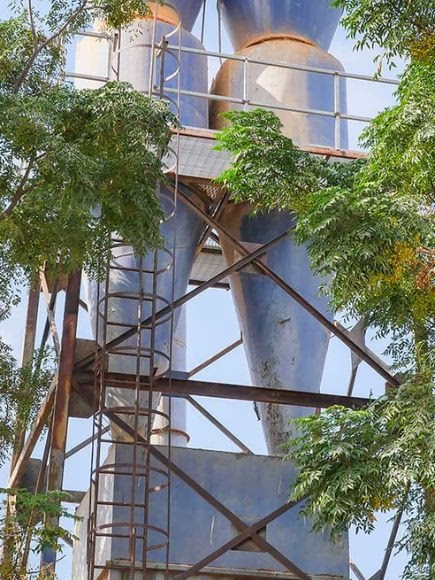Explosion Protection Doesn’t have to be an All-or-Nothing Proposition
The Problem
In 2013 a European door manufacturer needed assistance with their explosion protection system, which was no longer within ATEX compliance or supported with spare parts.
With a 15-acre manufacturing building that housed various unprotected equipment, they worried that solving this problem both financially and logistically would be difficult.
A Phased Protection Approach Solution
In July 2013 the Fike team visited the door manufacturer’s facility and conducted a site survey over a two-day period, said Fike Ireland Business Development Manager Donal Byrnes.
“I told them, ‘What we will do is look at one particular section of the plant and work on that,’” Byrnes said. “Facilities don’t have to go from minimally protected to fully protected in one year.”
Fike developed a phased explosion protection strategy to help the entire facility meet regulations over a set number of years, which also helped satisfy local AHJ’s (authority having jurisdiction) concerns.
Installation began in 2014 and first prioritized the installation of chemical suppression and isolation devices (HRDs and SRDs) on fiber bin outlets. Each subsequent year was dedicated to protecting the facility’s relay bag house (2015), two fiber bins (2016) and four dust collectors (2017).
Fike now handles all of the door manufacturer’s planned maintenance needs, ensuring they remain ATEX compliant.
While the financial and logistical implications of installing comprehensive explosion protection throughout a facility may at first appear overwhelming, Fike’s Phased Explosion Protection Strategy proves that explosion protection doesn’t have to be an all-or-nothing proposition.

Benefits Of A Phased Explosion Protection Strategy
We here at Fike understand the budgetary and logistical challenges of immediately realizing full compliance with NFPA 652 and ATEX standards. That’s why Fike works directly with clients to develop a “Phased Explosion Protection Strategy,” a plan set over several months or years to work toward full protection and regulatory compliance.
The benefits of a Phased Explosion Protection Strategy include:
PRIORITIZE HAZARD AREAS
Identify and protect the most critical areas and equipment of your facility. Having a plan that works toward full protection often satisfies AHJ’s requirements and other regulations.
BUDGET
A Phased Explosion Protection Strategy allows you to prepare budgets over the course of several months or years in preparation of reaching full compliance.
LOGISTICS
Installing and commissioning explosion vents, explosion suppression and active or passive explosion valves does require temporary system shutdown. Our team can work with you to plan out these logistical concerns in advance to maximize business continuity.
- Why is a Phased Explosion Protection Strategy commonly used by Fike clients?
-
When a client first become aware of a combustible dust explosion hazard, or if it’s perhaps a more extensive problem than what he or she originally thought, it can be overwhelming. There is a lot of learning happening at that time. Fike offers turnkey solutions through our consultancy services, dust hazard analysis capabilities, testing facilities and comprehensive passive and active explosion protection products. And the fact that these solutions may be implemented in a phased approach is often comforting to many of our clients.
- Is there an average length of time a Phased Explosion Protection Strategy is implemented?
-
It really depends on the authority having jurisdiction (AHJ) and their mandated time frame. There may be a time frame for NFPA/ATEX regulations or whatever the regulatory body is that our client is trying to follow. Some of the barriers for immediate implementation could be budgetary or logistical. Many customers need to plan out these solutions in advance to fit their budgets and avoid as much downtime as possible. So, we always start with the highest risks first and work back from there.
- How do AHJs or regulatory bodies view a company working toward full NFPA/ATEX compliance?
-
It’s often reliant on the extent of an OSHA inspector, AHJ or insurance agent’s findings. If the whole facility needs upkeep, they will likely work with you on a compliance date, and usually as long as you’re working toward the solution, they won’t issue new fines. However, if they come back and the facility hasn’t addressed anything or don’t have plans to address any of the citations from a previous audit, fines may be levied, or worse. Therefore, a phased approach proves to these parties your facility is indeed working toward full compliance.
